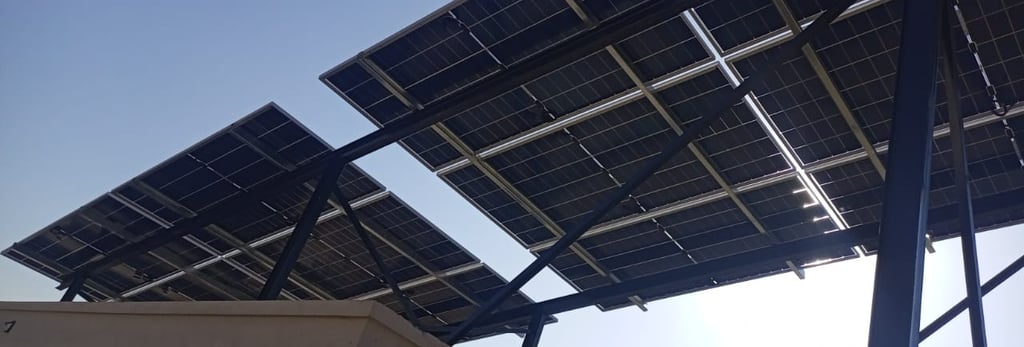How Solar Panels Are Made : Discover the Innovative Process Behind Your Renewable Energy Solution
In this blog, we will explore the fascinating process behind solar panel manufacturing in our latest post. From raw materials and photovoltaic cell production to assembly and quality control, we break down how cutting-edge technology transforms sunlight into clean, renewable energy. Whether you're a homeowner, business leader, or renewable energy enthusiast, learn how innovation and precision work together to power a sustainable future
Maham Fareed.
5/8/20242 min read


How are solar panels made?
Made of semiconductors, they may absorb, reflect or allow light from the sun to pass through. Multiply the semiconductors and you get a solar cell, or in fancy terms, photovoltaic cell (PVC). Electrons in the material then absorb the heat which makes them negatively charged and move about in the form of an electrical current. This is harnessed by conducting metal, which draws along those lines that you see on a panel.
The more efficient a PV cell is, the more power is converted from the light energy into electrical currents. However, some variables affect how much energy can be produced. These are:
· Light intensity
· Light wavelength
·The characteristics of the PV cell
While it is true that all sunlight can be converted into power, each semiconductor has something called a Bandgap, which determines what wavelength it uses most efficiently.
What are the materials used to make them?
Silicone
Currently the most popular material, it is also one of the most abundant materials on Earth. To make the conversion more efficient, crystalline silicon cells form a crystal lattice. In these structures, the atoms are organized in a way that best absorb light energy.
Low cost, efficiency and long life makes Silicone PV pack a power punch. Expected to last 25 years or more, at the end of their life, the cells still generate most of their peak energy capacity. What more could you need?
Thin film photovoltaics
This solar cell is made by depositing one or more layers of PV on a supportive material such as glass, plastic, or metal.
These layers are heated to create a watertight seal. These are then encased inside a metal frame and connected to other panels. The wires are protected by a junction box, and the panels by a glass frame, which still allows light to pass. Two wires carry the electricity to other panels or solar inverter.
Perovskite Photovoltaics
These are named after their crystal structure and layers are then created from them on a supporting called the substrate. The efficiency is relatively good when compared to silicone crystals.
Organic Photovoltaics (OPV)
As the name suggests, they are made from compounds rich in carbon, and the best thing about it is that they can be used to modify or enhance certain aspects of a PV cell like the bandgap (seen up). However, the downside is that these aren’t as efficient.
Multijunction photovoltaics (MPVC)
Multiple semiconductors are layered on top of each other to make MPV solar cells. Unlike single junction cells, these have different bandgaps, therefore absorbing more sunlight from the spectrum. Any light not absorbed by one layer is absorbed by the rest. Easy, right? In theory, yes. Practically, these are expensive to manufacture.
Solar PV Projects desiging, installation, & monitoring
Providing bespoke solar solutions across Islamabad & Karachi.
queries@induscleanenergy.com
Telephone: +92-21-34394311
© 2025. All rights reserved.
Mobile No:
+92 334 8824555
+92 321 5393007
Indus Clean energy PVT limited
Head Office: 116-D, Ground Floor, Block 2, PECHS, Karachi
Regional Office: Office no.6, 1st floor, AL-Rehman Plaza, College Road Rawalpindi.
Hyderabad Office: IM Enterprise, Shah Makki Road, Kacha Qilla, off Madina Masjid, Hyderabad.
+92 370072343
